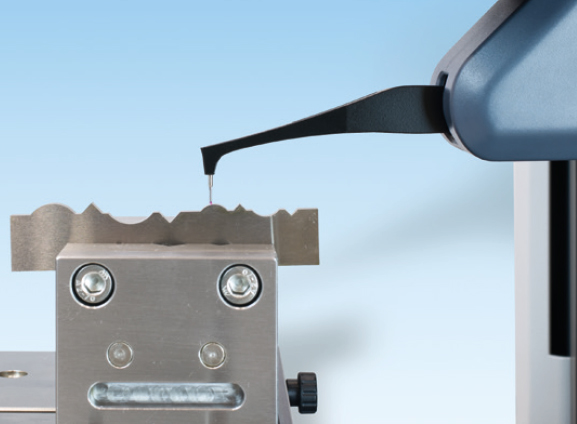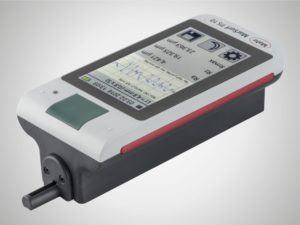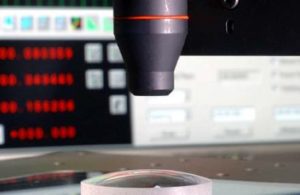Metrology Glossary: Roughness Tester
What Is A Roughness Tester?
A roughness tester is a precision instrument used to evaluate the texture of a surface, determining whether it is rough or smooth. This tool relies on a stylus, a delicate probe that gently traces the contours of the material under examination. As the stylus moves across the surface, it records variations in elevation. The roughness tester translates this data into a numerical measurement known as surface roughness, often denoted in micrometers (µm) or microinches (µin). A lower surface roughness value indicates a smoother surface, while a higher value signifies a rougher one.
What Are Roughness Testers Used For?
Manufacturing and Engineering:
- Quality Assurance: Roughness testers are used to maintain manufacturing quality, ensuring that surfaces meet stringent criteria for components such as bearings and gears, impacting friction, wear, and overall performance.
- Tool Performance Monitoring: These testers enable proactive tool maintenance by monitoring wear in machining processes, preventing damage and the production of substandard components.
- Surface Verification: Used to confirm surface smoothness before applying coatings or paints, roughness testers play a crucial role in ensuring optimal adhesion and minimizing defects.
Automotive Industry:
- Engine Optimization: Roughness testers measure the smoothness of critical engine components, ensuring efficient operation, reducing wear, and preventing oil leaks.
- Transmission and Drivetrain Evaluation: Assessing the surface finish of transmission components ensures smooth operation, reduces noise, and extends component lifespan.
- Body Panel Assessment: Utilized to evaluate the smoothness of painted surfaces on body panels, roughness testers ensure a uniform and aesthetically pleasing appearance.
Aerospace and Aviation Industry:
- Aircraft Component Precision: Roughness testers are critical in measuring the surface finish of vital aircraft components, impacting aerodynamic performance, fatigue resistance, and overall integrity.
- Satellite and Spacecraft Components: Ensuring precision and smoothness in surfaces of satellite and spacecraft components is crucial, as roughness can affect the performance and reliability of sensitive instruments.
Medical Device Manufacturing:
- Surgical Implant Quality Control: Roughness testers evaluate the surface finish of surgical implants, ensuring compatibility with human tissues and minimizing the risk of infection or irritation.
- Medical Instrument Smoothness: Assessing the smoothness of medical instruments like catheters helps ensure patient comfort and minimizes the risk of tissue damage.
Other Applications:
- Plastics Manufacturing: Roughness testers evaluate surface texture in plastic components, ensuring uniformity and minimizing defects that could impact product aesthetics or functionality.
- Electronics Manufacturing: In electronics, these testers measure the smoothness of semiconductor wafers and components, ensuring optimal performance and reliability.
- Textile Industry: Roughness testers assess fabric texture in the textile industry, ensuring consistency and minimizing defects that could affect comfort or appearance.

Related Terms
Surface roughness refers to the quantification of small deviations and irregularities present on a surface, typically resulting from the methods used during manufacturing, such as cutting, grinding, or casting....
A Coordinate Measuring Machine (CMM) is a precision device used for accurately assessing the geometric attributes of three-dimensional items....
A hardness tester is an instrument designed to gauge a material's ability to withstand permanent deformation....









